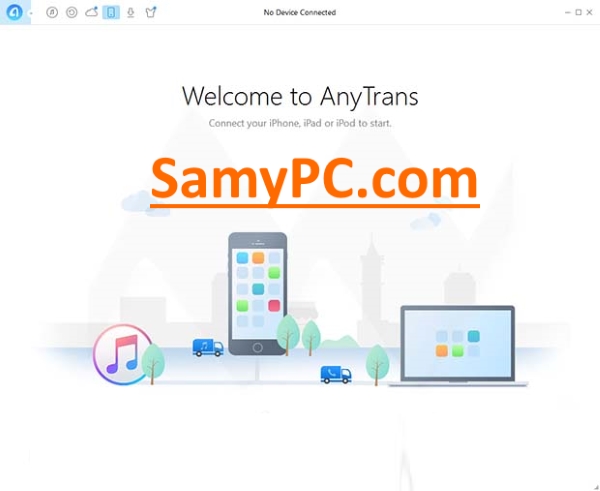

- #Anytrans for ios for linux .exe#
- #Anytrans for ios for linux install#
- #Anytrans for ios for linux download#
- #Anytrans for ios for linux free#
ITunes as just a media player is like using WinAmp with DRM and playlist functionality.

Then, you can associate a permanent, real iTunes application entry in Lutris (pointing it to the installed iTunes.exe) following the screenshots above and you can safely remove the installation-only entry from the Lutris library.Īpple Music is good for playing specific artists or songs but I prefer other solutions for streaming (that mixes together related music based on an artist).
#Anytrans for ios for linux install#
It should be able to pull off the install for you. You should just add the iTunes64Setup.exe as a normal game (name it something like itunes-setup). In these cases you can use Lutris to install iTunes by creating an entry just for the Win64 installer EXE. Some folks have noted they cannot even use wine to install 64bit iTunes to begin with, much less use Wine to launch it. Workaround for Installing iTunes via Wine When all is done, save and you should see a launchable entry for iTunes on the Lutris main menu.Īfter launching iTunes by right-clicking to “Play” or simply pushing the Play button when iTunes is highlighted it should launch for you. You’ll also want to set your Wine prefix to where you store and run your Wine applications, for me this is ~/.wine Now navigate to where iTunes.exe is located and associate it as a new game. Now you need to associate iTunes (or anything else) with Lutris, this can be done in a few steps. Lutris is just a useful way to launch any Wine-based application, though it’s original purpose is to support Gaming on Linux with Vulkan / DXVK.įirst you’ll want to install the Lutris game manager, refer to your distribution package manager to do this on another distribution. I believe this somewhat has to do with the move to DXVK for handling DirecX11 calls with Wine and recent Win32/Win64 applications. I’ve only had this issue on Intel-based integrated GPUs but have found that you can work around it calling Wine commands through the excellent Lutris game manager/launcher. UPDATE: Correcting the Black Screen Issue with Wineįolks in comments have noted that recent versions of wine may render some wine applications with a black screen. You do have access to your music library and can sync previous purchases down locally but I haven’t used this much past occasionally using the Apple Music streaming. If anyone has any luck here please post in the comments. Winecfg has the ability to map “drives” which correspond to hardware storage devices on the system. I have not gotten an iPhone detected and synced through iTunes running via Wine, I tried briefly to pass-through an iPhone via the USB dev device but but didn’t spend too much time on it. Note that some applications may need to be restarted on Linux to take effect but this solved all the general scratchiness issues I had in general (mumble, bluejeans, etc). Then restart PulseAudio as your normal user: pulseaudio -k To this: load-module module-udev-detect tsched=0 I noticed after upgrading to Fedora 28 that I started hearing crackling in the headset, I was able to fix this by editing /etc/pulse/default.paĬhange this: load-module module-udev-detect

This may cause static and popping on older hardware. Recent Linux distributions using PulseAudio have changed to a time-based scheduler in stead of interrupt-driven. If you experience scratchy sounds go into iTunes preferences and change the playback device to Direct Sound and restart the application.įix: Static and Crackling in Fedora 28+ in General Go ahead and run it.įrom here you can safely log into iTunes with your Apple ID and everything should work.
#Anytrans for ios for linux .exe#
exe file or right-click and run it from your file manager.Īfter everything is installed you should see iTunes available in the application menu of your desktop environment. I opted to not install a desktop icon so I have no idea what that will do. Next you’re going to run the installer with wine and walk through all the confirmation steps.
#Anytrans for ios for linux download#
Next you’re going to download the Windows iTunes installer. Next run the winecfg command and configure your operating system to Windows 7. Earlier versions of Wine do not work so well but 3.10 seems ok. On Fedora 28 this is the current version as of typing this. Below are the steps to use iTunes on Linux via Wine and have access to iTunes and Apple Music.Įnsure you have wine installed (>=3.10).
#Anytrans for ios for linux free#
Having been given a free Apple Music subscription as part of a family plan it’s useful to have additional streaming media options. Recent versions of Wine can run iTunes and Apple Music for Linux with no wizardry required.


 0 kommentar(er)
0 kommentar(er)
